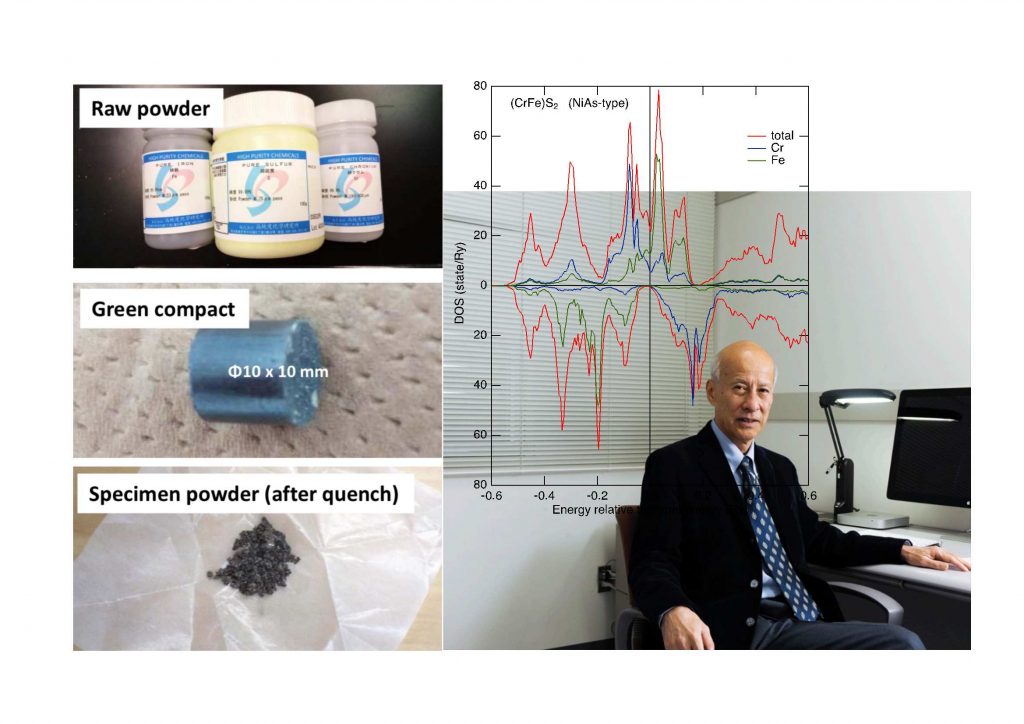Reseach Result Synthesis of half-metala with zero magnetization—application to ultra high density magnetic memory, magnetic sensors, etc. expected
Electronic devices with ultra-low power consumption and high-speed logic gates are indispensable for the basic technologies supporting the advanced IT society. In response to this, materials called “half-metal”, which can carry information using both charge- and spin-degrees of freedoms, and hence, dramatically improve the performance of devices, are actively investigated. The half-metal developed so far has been a ferromagnet. If the half-metal is antiferromagnetic-like, no magnetic stray field to the outside will occur. This means even if it is integrated at high density, disturbance due to magnetic interaction in the device will not occur. Therefore, materials that become antiferromagnetic-like half-metals (commonly called half-metallic antiferromagnet) have been searched for many years, but only two cases have been reported in the past. This time, a compound consisting of iron, chromium, and sulfur is synthesized on the basis of the original development guideline: “making the total number of valence electrons of transition metal elements 10”. This material is a half-metal and, furthermore, completely loses its magnetization at low temperatures. In addition to succeeding in synthesizing an antiferromagnetic-like half-metal material showing excellent properties, this result, which demonstrates the importance of material development guidelines, will improve the efficiency of future material search and development and accelerate the innovation of electronic devices.

The origin of this research comes back to the discovery of a simple rule by Professor Hisazumi Akai around 2006, when he was a professor at the Graduate School of Science. He found that the number of effective d-electrons of an ion must be 5 per magnetic ion (10 per ion pair). Following this rule, the Akai group subsequently found many antiferromagnetic-like half-metal candidates by first-principles calculations, but few experimental attempts were made to synthesize such candidate materials. In 2019, a research team was formed by Professor Satoshi Senboshi and Professor Rie Umeysu of Institute for Materials Research, Tohoku University, Senior Researcher Yosuke Kawahito (Invited Professor of Graduate School of Engineering), and Invited Professor Hisazumi Akai (at that time, Project Researcher of The Institute for Solid State Physics, The University of Tokyo), and soon after, the above compounds were successfully synthesized. It is epoch-making in the sense that a materials with the intended function was predicted by first-principles calculation and was actually synthesized.
